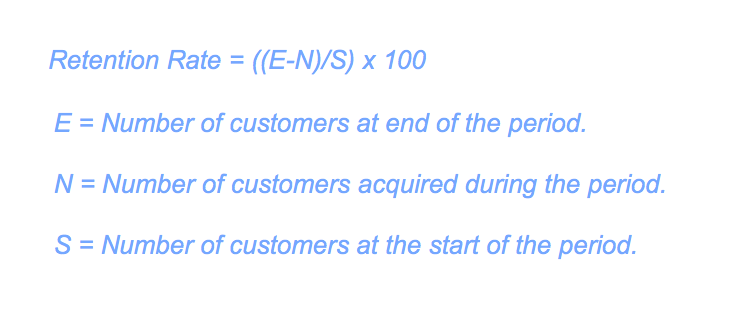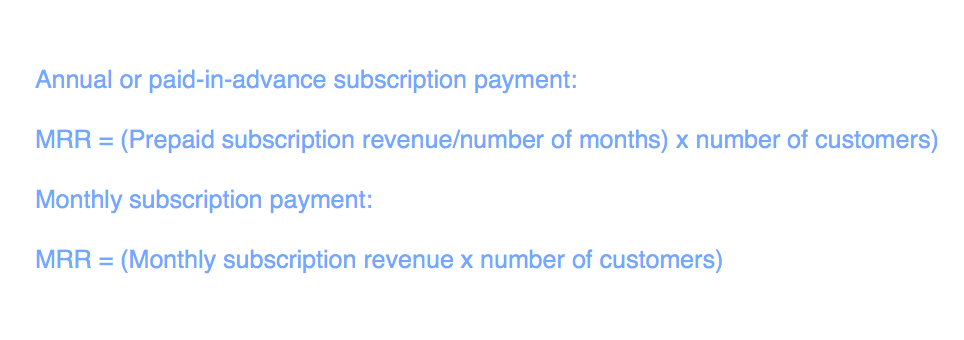We all know that kid from middle school, which everyone had big hopes for, but didn’t turn into an extraordinary genius, or vice versa; the lazy kid in class becoming an unexpected success…
Come to think of it; it’s not always only people that prove other people’s expectations wrong.
Thank goodness there are ways to measure Product Success in the early stages so that you don’t keep wasting your money on something useless.
Or don’t give enough attention to a side feature that actually is the key feature of your product which you didn’t realize.
Let me explain before I cause any confusion:
What exactly is a successful product?
A successful product is one that fulfills the creators’ expectations and pleases the user in every possible way. To be more precise:
- It is a fit for the market,
- Has and brings organic traffic,
- Engages well with the customers,
- Is being regularly used by them,
- And has a relatively lower churn rate.

What does product success look like for different products?
So, first of all, there are tons of Key Performance Indicators (KPI) that are used to measure product success.
If you try to use all of them at once, you will probably get lost in the process. Even if not, you will be overwhelmed for sure.
Let’s think of Netflix. To see if Netflix is a successful product or not, you should see the daily and monthly active user (DAU and MAU) rates.
This is because the primary purpose of Netflix is to stream movies, shows, series and replace the television, which is used at least a couple of times a week.
For a hotel recommendation app, though, the key metric would be Net Promoter Score (NPS) instead of DAU since not everyone needs a new hotel every day.
What is NPS and DAU?
Let’s take a look at it (and other metrics, of course)
How to measure the success of a product

The main goal of calculating product success is to increase its effectiveness, simultaneously with your Customer Health Score, using KPIs.
KPIs, I said. Let’s take a look at the most common and applicable to most businesses metrics:
Net Promoter Score (NPS)
As you might guess from the name, the NPS metric measures the percentage of promoting (recommending) users and the exact opposite, those who detract it.

In other words, it is your rating out of 10 stars.
Those who rate you between 0-6 are your detractors, those who rate 7 or 8 are neutral, and the top raters (9-10) are your promoters.
And how to create an NPS survey is another thing you need to know to get a healthy result from your survey.
As you see, you need to know what your customers think of you to be able to set an NPS score goal. Well, how can you serve people without knowing what they want after all, right?
Client Retention Rate (CRR)
CRR is the percentage of your loyal customers.
Those who stay with you for a long time.
Those who are satisfied with your product and keep using it.
And here is how you calculate Customer Retention Rate:

To clarify, you pick yourself an ideal period length, subtract the number of new customers that joined during the period from the total amount of customers, divide it by the number of existing customers before the period started, and multiply it by 100.
Complicated, isn’t it?
I’d rather use a free retention rate calculator.
And to be able to have a strong strategy, I would learn how to maximize customer retention.
Active User Percentage (DAU, WAU, MAU)
Just because you get new customers doesn’t mean that you will be able to keep them forever unless they use your product, right?
Your daily (DAU), weekly (WAU), and monthly active user (MAU) percentage can show you if you are likely to have a high CRR or NPS.
To know the DAU amount, you need to be using a tool such as Google Analytics to know how many of your customers logged in that day to use your product.
The same goes for WAU and MAU.
Not every kind of product might need to set a goal for DAU.
For instance, if you are using an onboarding tool such as UserGuiding, you wouldn’t have to log in every single day to create a new guide. But an admin probably would log in at least a couple of times a month to see if the guide is working and how many times it has been used.
Basically, if you have a product, you have to make it worthy of spending time on, rather than just having people try it and leave.
Monthly Recurring Revenue (MRR)
MRR is the estimated income of your company per month.
It is a crucial part of SaaS businesses in which neither the income nor the expenses are the same every month. You will understand better when I share the formula:

For instance, if you have a monthly payment based product, 10 basic version users from $100, and 5 advanced version users from $250, Your MRR will look like this:
(10×100)+(5×250)=2250$
MRR is mostly the only key feature that companies rely on since it is the income itself, but don’t forget that if you don’t please the customers to keep them loyal and make them promoters, or if you don’t know how often your users bother to use your product, your MRR will go down inevitably.
Customer Lifetime Value (CLTV)
CLTV or LTV is how much profit a customer is going to bring to your business.

The Profit Margin is the Average Revenue Per User (ARPU), and the lifetime value is the customer lifetime, aka the period that your customer retains.
So instead of setting a general role such as MRR, this time, you focus on each customer individually and evaluate each one according to their own benefits to your business.
Customer Acquisition Cost (CAC)
If your expenses per customer are more than the customer’s profit, your business will likely go down.
To prevent such a thing from happening, you can calculate your CAC by:

Mark Thompson, the co-founder of PayKickstart.com, warns us that CAC is often miscalculated and misinterpreted since calculating CAC monthly could be highly misleading.
‘’You should calculate your CAC monthly, quarterly, bi-annually, and annually, compare the results, and move accordingly,’’ he says.
Other Metrics and Goals to track for product success

Profit Margin (PM)
PM, being very similar to CAC, is a more broad term that contains any kind of cost in terms of expenses.
To calculate your PM, you should divide your profit by your revenue and multiply it by 100:

Contrary to MRR, you get to decide on the period you want to see in PM, and it is applicable to almost every kind of company, whether it is subscription-based or one-time-purchase-based.
Traffic
Evaluating your paid and organic traffic allows you to decide whether the distribution channels you use are effective or not.
If you are a company that relies on advertising and paid partnerships, analyzing the most effective resources can save you a lot of money since you would stop using ones that cost you more than they make you earn.
And about organic traffic, analyzing what type of organic traffic you are getting could make it easier for you to set long-term strategies:
- Are you going to focus on content marketing, or will you increase visibility on social media?
- Are you getting the organic traffic to your blog through links or to your website homepage through recommendations?
Bounce Rate
Bounce rate is the percentage of people who only spend time on 1 page of your website and leave it without further actions.
A product analysis tool such as Google Analytics or Clicky can help you see your bounce rate.
So, is it supposed to be low?
Yes:
- A bounce rate between 20%-40% is considered excellent.
- 41%-55% is the average. Doesn’t scream for improvement, but can be better.
- 56%-70% calls for improvement in the product since people are not fully benefiting from it.
- A higher bounce rate than 70% is alarming and needs immediate attention, except for blogs, news, etc., since the whole info is given on one page on such sites.
- Anything higher than 90% or lower 20% could be a hint of a technical problem in your product, such as an installation error, doesn’t have to be, but it doesn’t hurt checking.
Churn Rate
Customer Churn Rate and Revenue Churn Rate are the exact opposite of CRR: it is the percentage of users or revenue you lost in a period.
You can easily calculate the Customer Churn rate; just divide the churned customer amount by the number of existing customers.

Most people tend to forget that ‘’Revenue Churn Rate’’ exists and only focus on Customer Churn Rate, but hear me out:
Would you rather lose 5 customers who pay the minimum or 3 customers who bring you the most profit?
The average churn rates differ from one product to another. For example, while the average Churn Rate is around 5.33% for SaaS businesses, it can go up to an average of 7.69% for consumer services.
Session Duration
Even though it might not be the most efficient KPI on its own, it is highly important to see the strengths and weaknesses of your product.
You can analyze how much each customer spends on your product, as well as how they use that time in it:
- By analyzing the session duration of churned users, you can easily detect the weaknesses of your product and either eliminate or improve them.
- By analyzing the session duration of your top (promoter) users, you can see and evaluate the top features of your freemium and premium versions and develop accordingly.
Number of Sessions Per User
My definition of this KPI: Session Duration, but make it more general.
Tracking the number of Sessions per user (how many times they logged in) can give you insights about your estimated CLTV, since the more the customer interacts with the product, the more likely they are to remain an active customer.
Sounds similar to DAU and MAU, right?
The difference is that while measuring daily active users, you might not take into account how many times a user logged in within a day.
Think of a cryptocurrency mining tool.
If you have big plans and want to make the most profit out of your investments, you would probably check the market at least twice a day.
Suppose your main goal of the tool is to make it easier to mine. In that case, it should probably focus on reducing the session duration and number of sessions per user while keeping the MAU high to prove that people don’t churn, but thanks to the product, they can waste less time mining while trusting the product.
Customer Satisfaction Score (CSAT)
Being very similar to NPS, this time, you ask your customers to evaluate a feature rather than the whole product.
There are several significant benefits of using CSAT:
- It helps to determine the key features of your product,
- The customers like to be heard, and developing according to their opinions make it more likely to turn them into promoters,
- You don’t have to do a lot of complicated calculations; you just need to ask the customers to rate a feature and get exact results and feedback, which is like the cherry on top.
The use of CSAT is similar to Customer Effort Score (CES), and it is not complicated, I promise.
So which Product Success Metric should you start using in your business Right Now?

So, first of all, if you are a beginner, do not try to implement all these KPIs into your business strategy at once.
Well, if you are eager to start yet, follow these 3 steps:
#1 – How many KPIs should I measure simultaneously?
This might surprise you, but only one, if possible.
The biggest mistake most businesses make is not knowing their key feature.
Before even trying to calculate your product success, ask yourself these questions:
- How many key features does your product have?
- Do your users use those key features?
#2 – Find and focus on the key feature of your product
Is your product supposed to help people? Or is it just supposed to entertain them?
If you expect people to spend a lot of time on your product, you may start with a DAU/MAU ratio.
Or, if you have different segments of users in your product (admin, leader, user, etc.), instead of calculating the estimated time spend, you should probably focus on CLTV.
And also, if you have a freemium product model, make sure to have most of those key features in the premium version because no one (including me) would pay for something while they can get the necessary part for free.
#3 – Don’t be afraid to change your key metric or strategy
This is probably obvious, but you don’t have to stick with the goal and metric you started.
Just like relationships, product metrics might seem like ‘’the one’’ at the beginning but can turn out to be toxic in later periods. At least you know all the KPIs that are being used (or can be used) in a business, and abandoning one for a better fit doesn’t count as cheating in this world.
For instance, you felt MRR was your core KPI, and you thought you had a stable (or increasing) MRR. But after a few months, your MRR statistics went down unexpectedly (just like Bitcoin in April 2022).
The most probable cause to this problem is that you had users that subscribed to (or bought) your product, didn’t find it as effective as they expected, forgot that they were paying for it, and as soon as they realized, they left you with a considerable churn rate.
If only you had taken WAU into account, right?
From now on, what you can do is changing your key KPI to one that better fits your product’s key features.
And don’t forget to measure the success of your product in different periods,
- If you usually use KPIs monthly, use them also quarterly.
- If you use a total index as your primary indicator, use averages too.
Conclusion
I know, I wish calculating product success was as easy as a simple equation.
But here we are, discussing a hundred different KPIs and aspects of a product.
Pleasing humans is not easy after all.
But you can at least start strong and know what you exactly need instead of drowning in options.
Frequently Asked Questions
What is a successful product?
A product that has many active users, a below-the-average churn rate, and high traffic can be considered a successful product.
How do you define product success?
Product success can be considered to be achieved when the product fulfills the intentions of the creator and has almost no detractors. Such products usually have high CSAT and NPS scores.
What is a product success manager?
A product success manager is responsible for analyzing the product before and after the launch while determining and executing the necessary KPIs and adjustments during the lifecycle of the product.








